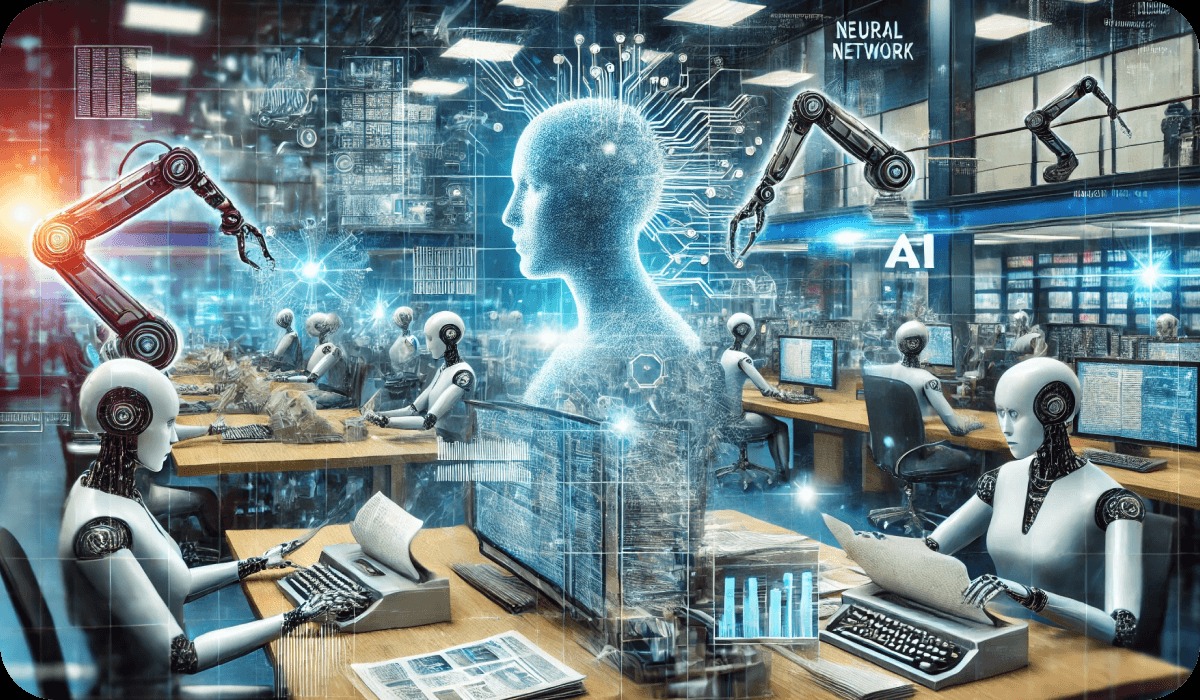How Artificial Intelligence Is Used in News Production

Artificial Intelligence (AI) has rapidly become a transformative force across industries, and news media is no exception. From automating routine tasks to enhancing investigative journalism, AI technologies are reshaping how news is gathered, produced, and delivered. This integration of AI not only improves efficiency and accuracy but also opens new possibilities for storytelling and audience engagement. This article explores how artificial intelligence is used in news production, detailing its applications, benefits, challenges, and future potential.
Understanding AI in News Production
Artificial Intelligence refers to computer systems capable of performing tasks that typically require human intelligence, such as learning, reasoning, language understanding, and problem-solving. In news production, AI encompasses:
- Natural Language Processing (NLP)
- Machine Learning algorithms
- Automated content generation
- Data analytics and visualization
- Image and video recognition
- Chatbots and recommendation systems
Together, these tools assist journalists and media organizations in optimizing workflows and enriching content.
Automating Routine Reporting
One of the most widespread uses of AI in news production is automated journalism, also known as robot journalism.
- AI algorithms generate basic news stories from structured data, such as financial reports, sports scores, weather updates, and election results.
- This automation enables rapid production of numerous articles with minimal human intervention.
- Examples include the Associated Press using AI to report quarterly earnings and Reuters’ Lynx Insight tool assisting journalists with story suggestions.
Automated reporting frees human reporters to focus on more complex and investigative work.
Enhancing Data Journalism and Analysis
AI greatly supports data-driven journalism by processing vast datasets efficiently.
- Machine learning models identify patterns, trends, and anomalies in data that can reveal newsworthy insights.
- NLP techniques extract relevant information from documents, social media, and transcripts.
- Visualization tools powered by AI create interactive charts and maps that clarify complex topics for audiences.
AI’s analytical power elevates investigative reporting and explanatory journalism.
Personalizing News Delivery
AI algorithms analyze user behavior and preferences to deliver personalized news experiences.
- Recommendation engines suggest articles, videos, and podcasts tailored to individual interests.
- Personalization increases user engagement, retention, and satisfaction.
- Media platforms like Flipboard, Google News, and Apple News rely heavily on AI-driven curation.
While personalization enhances relevance, it also raises concerns about filter bubbles and ideological silos.
Fact-Checking and Misinformation Detection
AI aids in combating misinformation by supporting fact-checking processes.
- Automated tools cross-reference claims against databases of verified facts and sources.
- Machine learning models detect deepfakes, manipulated images, and false content.
- Some newsrooms integrate AI to flag suspicious social media posts or viral stories for human review.
AI accelerates verification but requires human oversight to ensure accuracy and context.
Supporting Multimedia Content Creation
AI technologies contribute to the creation and editing of multimedia news content.
- Speech-to-text transcription tools convert interviews and broadcasts into text efficiently.
- Image recognition helps tag and archive visual assets.
- Automated video editing and summarization condense footage into highlight reels.
- Virtual anchors and synthesized voices enable AI-generated news segments.
These applications streamline production and expand creative possibilities.
Facilitating Audience Interaction and Engagement
AI-powered chatbots and virtual assistants provide interactive news experiences.
- Chatbots can answer reader questions, provide news summaries, or guide users through topics.
- Interactive features personalize content discovery and encourage participation.
- Sentiment analysis tools gauge audience reactions and help tailor editorial strategies.
Enhanced interactivity deepens audience connection and feedback loops.
Ethical and Practical Challenges
The use of AI in news production introduces several challenges:
- Bias and Fairness: AI systems can inherit biases from training data, impacting content selection or framing.
- Transparency: Automated content generation may lack disclosure, confusing audiences about human involvement.
- Job Displacement: Automation raises concerns about reducing journalistic employment opportunities.
- Quality Control: Ensuring accuracy and editorial standards in AI-generated content requires oversight.
- Privacy: Collecting and analyzing user data for personalization must respect ethical and legal standards.
Addressing these challenges is critical to responsible AI integration.
The Changing Role of Journalists
AI reshapes the journalist’s role from content creator to editor, analyst, and innovator.
- Journalists interpret AI-generated outputs and add human context and storytelling.
- They focus on investigative, explanatory, and narrative reporting that AI cannot replicate.
- Journalists collaborate with data scientists and technologists to develop AI tools tailored to newsroom needs.
This evolution emphasizes human creativity and judgment alongside technological capabilities.
Future Prospects of AI in News Production
Looking ahead, AI’s role in news media will likely expand and diversify:
- Advances in natural language generation may produce increasingly sophisticated narratives.
- Real-time AI-powered monitoring will improve breaking news detection.
- Enhanced multimedia synthesis will enable immersive storytelling with AR and VR.
- Cross-lingual AI translation and machine translation software will broaden global news access.
- Ethical AI frameworks will guide transparent and equitable news production.
Continuous innovation promises richer, faster, and more inclusive journalism.
Conclusion
artificial intelligence is transforming news production by automating routine tasks, enhancing data analysis, personalizing content, and supporting multimedia storytelling. While AI offers significant benefits in efficiency and creativity, it also presents ethical and practical challenges that require thoughtful management. Integrating AI thoughtfully, with human oversight and editorial values, will enable news media to thrive and better serve the public in a rapidly evolving digital landscape.



